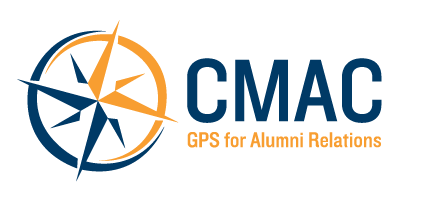Why Alumni Engagement Isn't Just a 'Nice to Have': Making the Case for Investment in Challenging Times
Over the past year, I’ve had dozens of conversations with advancement leaders worldwide. The current landscape is challenging, with scary headlines heralding budget cuts, efficiency measures, and the need to do more with less. How, then, can advancement leaders demonstrate the value of continued investment in alumni engagement?
Alumni engagement is often perceived as a “nice to have” rather than a mission-critical component of institutional strategy. Engagement professionals are sometimes seen as “party planners” representing a cost center rather than powerful contributors to the bottom line. While this might be an exaggeration, budget stress is real, and institutions may be tempted to prioritize short-term fundraising over long-term engagement. I believe this is a false dichotomy, but more on that later.
Here are some concrete steps advancement leaders can take to build the case for continued investment in alumni engagement:
Highlight the Importance of Pipeline Health: Integrating engagement and fundraising efforts is more important than ever. As my colleague Ryan pointed out in his article last week (which clearly struck a nerve), now is the time to put a “development lens” on your engagement strategy. At the same time, neglecting engagement in favor of short-term fundraising is like focusing solely on this year’s crop without planting for future harvests. Donor participation is declining, with fewer donors giving more dollars. However, millennials, Gen Z, and Gen Alpha are all regularly giving their time and treasure to organizations where they feel they can make an impact. Our job is to help them see the impact they can make with our institutions – as volunteers and donors. As my colleague Howard Heevner often says, we must listen to our constituents and reflect that listening if we want to prevent that pipeline from running dry.
Understand Your Constituents: Identify the moments in their lives where your institution can deliver the most value. Are you building your strategy around these moments? If not, prioritize mapping your constituents’ journey and their interactions with the institution. This work is both fun and fulfilling and generates insights that help prioritize efforts.
Align with Institutional Priorities: Many institutions, for example, now have goals around career outcomes for students. How can alumni contribute to these goals? Collaborating with departments focused on these priorities can drive efficiency and better results. Review your institution’s strategic framework and identify all the ways that your team can add value in each area. Alumni engagement can be a source of “warm leads” and a powerful catalyst for achieving larger institutional goals.
Benchmark Against Other Institutions: In lean times, institutions are wary of making “outsized” investments compared to peers. Showing where you stand relative to the competition can support the case for continued investment. Compare the demographics of your alumni population and the size and structure of your advancement team with peer institutions. While it’s challenging to objectively compare engagement output, the CASE Insights on Alumni Engagement are a great starting point.
Focus on Volunteerism: Attendance at events doesn’t always translate to development dollars, but volunteerism does. Research consistently shows that volunteers are more likely to give and give larger sums than unengaged alumni. Expand volunteer opportunities to attract those willing to invest their time in the institution. This complements development efforts, and many institutions now include volunteer engagement goals in their philanthropic campaigns. Volunteerism doesn’t need to be about being on boards. It can be as simple as alumni spending thirty minutes talking with students about gaining work experience. Can you work with your development colleagues to identify alumni who should be targeted for volunteer engagement opportunities?
Use Data to Tell the Story: Utilize quantitative data coupled with qualitative insights to demonstrate why engagement matters. Start with the CASE Insights on Alumni Engagement’s philanthropy-volunteer-experience-communication framework, but don’t stop there. Measure how alumni contribute to institutional priorities and philanthropic revenue. Share impactful stories and develop an internal communication strategy to highlight this value. Identify who “gets it” and enlist their help in communicating the importance of your team’s work.
Most importantly, be proactive. Don’t wait until your program is at risk to start implementing these strategies.
Did this resonate with you? What would you add or subtract? Let me know in the comments or let’s find time to chat.
Nicole Hess Kempton is a Vice President and Senior Consultant with Chris Marshall Advancement Consulting and co-hosts the Alumless World podcast with fellow CMAC consultant Ryan Catherwood.








